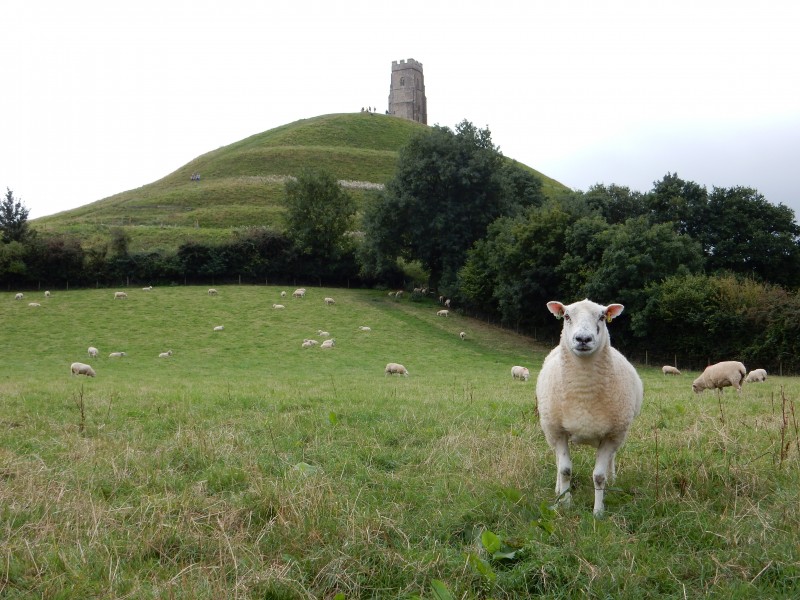
Glastonbury Tor, beloved of humans and sheep alike
This summer I made a brief pagan tour of Britain, starting with the most famous site of all – Glastonbury Tor. It reaches up out of low-lying land surmounted by an ancient tower like a finger pointing heavenwards. It is a natural hill, but has been shaped by man most notably in the form of a prehistoric labyrinth that wound its way towards the top where rituals may have been carried out to facilitate entry into the world beyond. From the top are views over the Somerset Levels far away towards the sea on the far horizon.
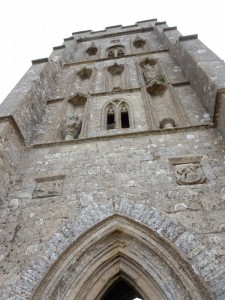
Eyes drawn upwards by St Michael’s Tower atop the Tor
There are many myths and legends surrounding the Tor, many of which have to do with Faeries, the Underworld and King Arthur. It is thought to be the mythical Isle of Avalon, for until modern times the lowlands flooded for most of the year leaving the hill stranded like a magic island in a watery dimension (the name Glaston derives from the ‘glass’-like shallows that surrounded it).
The uncle of Jesus, Joseph of Arimathea, is said to have visited the area as a tin merchant and to have brought the young Jesus with him. Intriguingly, there is a thorn tree of a type only found in the Middle East which is said to be descended from a stick Joseph planted into the ground. The legend inspired a famous poem by William Blake, which was later set to music as Jerusalem – ‘And did those feet in ancient times walk upon England’s mountains green, and was the holy Lamb of God, on England’s pleasant pastures seen! (Curiously the oddest experience I’ve had on the Tor, to which I like to make a pilgrimage whenever possible) is being rubbed on my back by a sheep while in a state of deep contemplation.)
Early Christians were drawn to the hill, perhaps because of its spiritual heritage, and there may have been monks’ cells here at the time of St Patrick (also said to have visited). Later a church was raised to St Michael, defeater of dragons, in order to channel the energies of the ‘power spot’, but ironically an earthquake in 1275 destroyed it. A second church was put up but demolished in 1539 at the time of the Dissolution of the Monasteries by Henry VIII (the church belonged to the Abbey in the town below). All that survived was the ruined tower that caps the Tor to this day.
In 1191 the monks of Glastonbury Abbey claimed to have discovered the grave of King Arthur. It was an audacious claim at a time of failing fortunes to increase the fame and thereby the income of the Abbey through the donations of those who came on pilgrimage. So wealthy was the Abbey that Henry VIII eagerly seized it for the state, hanging the abbot for resistance on top of the Tor. Now it has been reclaimed by New Agers and neo-pagans, who can often be found along with the day trippers and tourists absorbing the spirit of place.
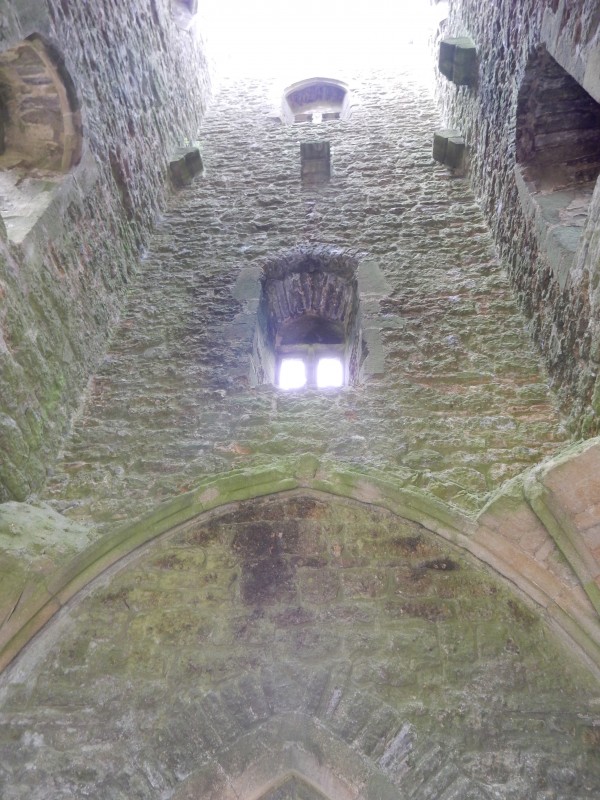
The ruined tower on the ancient power spot channels a sense of radiance from on high
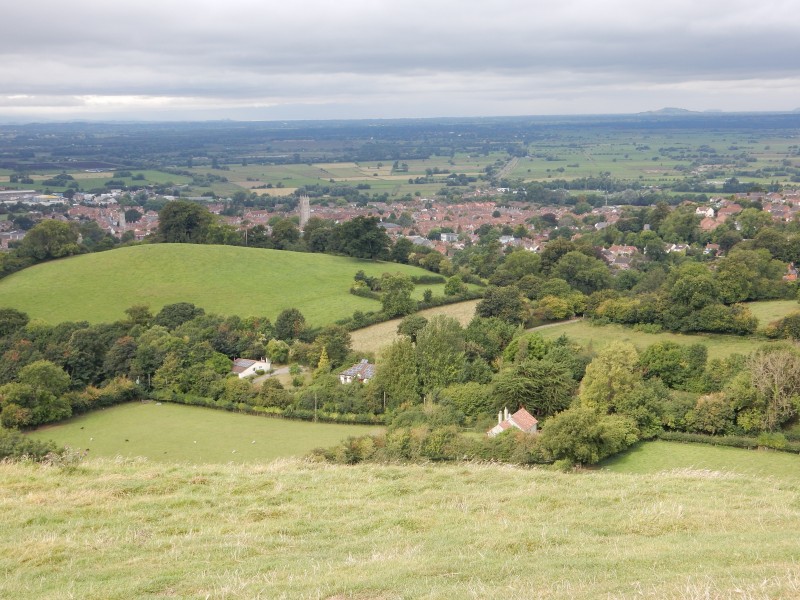
View from the top of the Tor, looking toward the distant sea. In times past the whole plain would have flooded, and even in recent times it has been covered in water.
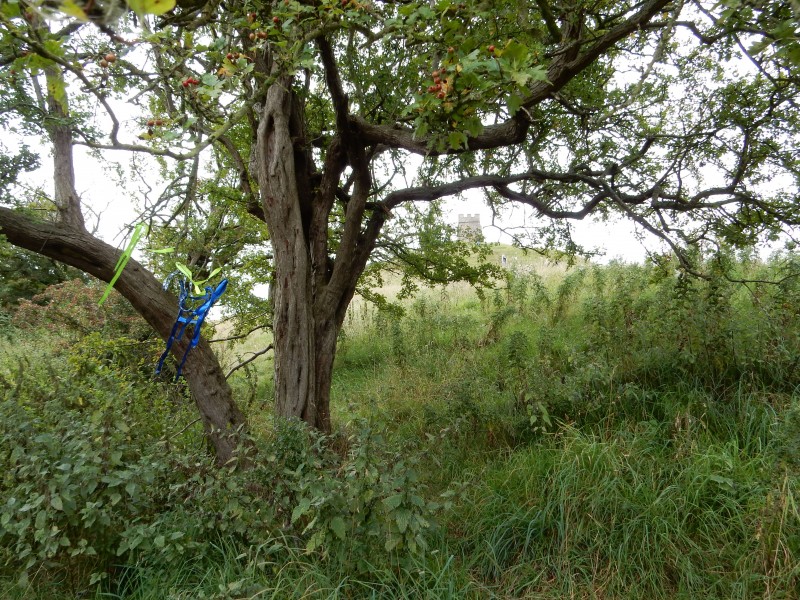
Pagan prayer ribbons on a tree by the path to the Tor
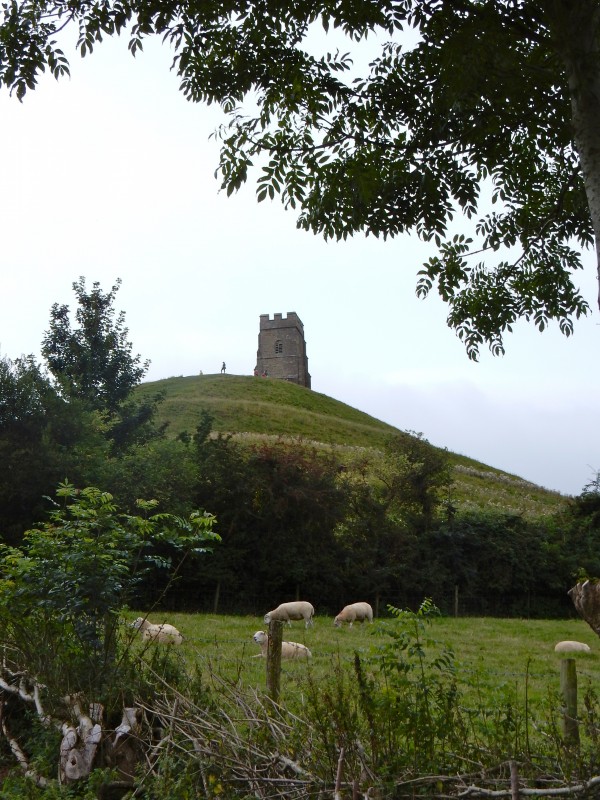
Humans gaze while sheep graze in the meadows below the Tor
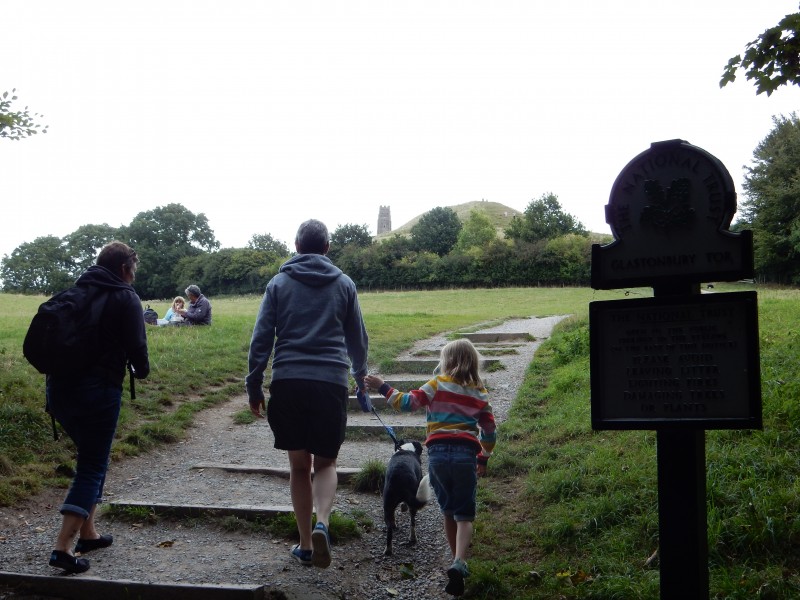
There are places on earth that seem to summon those in the vicinity. For millennia the Tor has been doing just that.

The ‘power spot’ of ancient Avalon

Leave a Reply